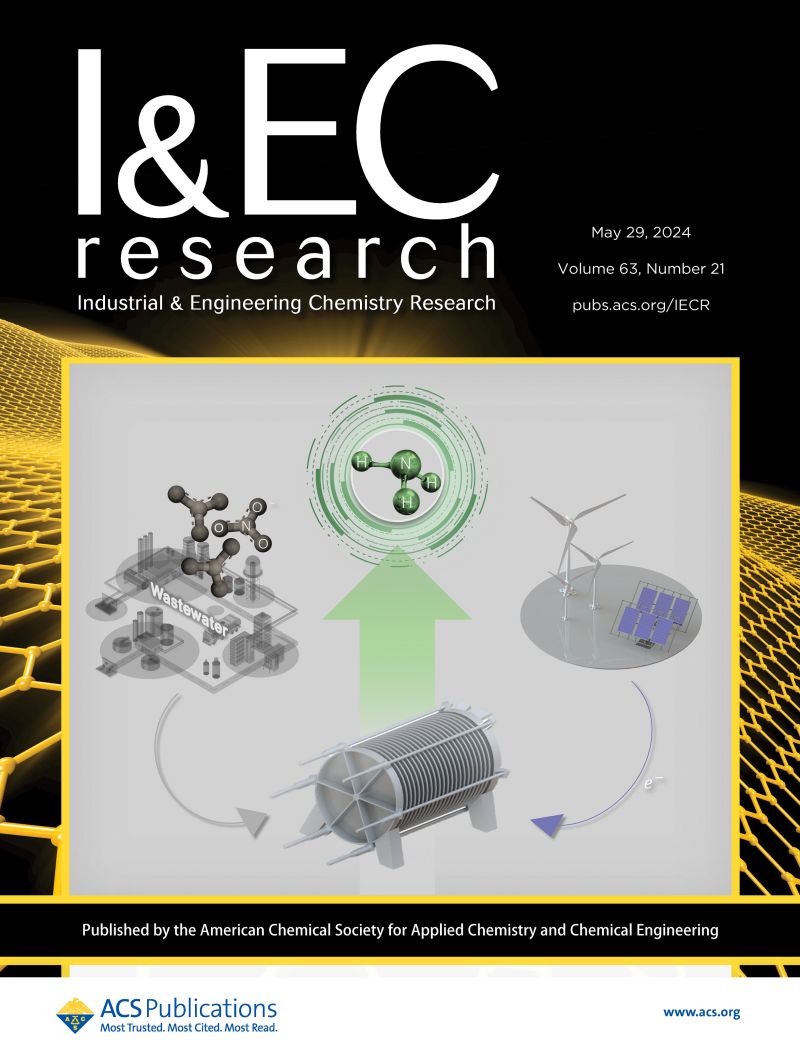Composite Enzyme/CaCO3@Hydrogel Particles for Continuous Cascade Multienzymatic Catalysis
IF 3.9
3区 工程技术
Q2 ENGINEERING, CHEMICAL
引用次数: 0
Abstract
Immobilization of multiple enzymes in particles creates opportunities to organize a complex network of biochemical reactions for continuous cascade catalysis. In this work, hydrogel particles integrated with enzyme/CaCO3 nanoparticles are created via droplet-template synthesis for the continuous cascade catalysis of CO2 into methanol. Three enzymes, including formate dehydrogenase (FateDH), formaldehyde dehydrogenase (FaldDH), and alcohol dehydrogenase (ADH), are separately immobilized in these CaCO3 nanoparticles inside the hydrogel particles. The obtained FateDH/CaCO3@PEGDA, FaldDH/CaCO3@PEGDA, and ADH/CaCO3@PEGDA hydrogel particles enable good performance for cascade enzymatic catalysis in batch, showing a higher conversion rate than the free enzymes and the hydrogel particles coencapsulated with the three enzymes. Meanwhile, these enzyme/CaCO3@PEGDA hydrogel particles exhibit good repeatability for the cascade enzymatic catalysis, typically showing a ∼12% decrease in conversion rate after 7 cycles. Moreover, these enzyme/CaCO3@PEGDA hydrogel particles are filled in a U-shaped reactor for continuous cascade enzymatic catalysis. When three units of such reactors are sequentially used, these enzyme/CaCO3@PEGDA hydrogel particles allow efficient conversion of CO2 dissolved in solution into methanol, exhibiting a maximum methanol yield at 6.00 mM. This work provides a simple, environmentally friendly, and low-cost strategy for creating multienzyme-immobilized particles for cascade enzymatic catalysis.

复合酶/CaCO3@Hydrogel颗粒连续级联多酶催化
将多种酶固定在颗粒中,为连续级联催化创造了组织复杂生化反应网络的机会。在这项工作中,通过液滴模板合成,将酶/CaCO3纳米颗粒集成在水凝胶颗粒中,用于连续级联催化二氧化碳转化为甲醇。甲酸脱氢酶(FateDH)、甲醛脱氢酶(FaldDH)和醇脱氢酶(ADH)三种酶分别固定在水凝胶颗粒内的CaCO3纳米颗粒中。所得的FateDH/CaCO3@PEGDA、FaldDH/CaCO3@PEGDA和ADH/CaCO3@PEGDA水凝胶颗粒具有较好的批级联酶催化性能,转化率高于游离酶和与三种酶共包被的水凝胶颗粒。同时,这些酶/CaCO3@PEGDA水凝胶颗粒在级联酶催化中表现出良好的重复性,通常在7个循环后转化率降低~ 12%。此外,将这些酶/CaCO3@PEGDA水凝胶颗粒填充在u型反应器中进行连续级联酶催化。当三个这样的反应器单元依次使用时,这些酶/CaCO3@PEGDA水凝胶颗粒可以有效地将溶解在溶液中的二氧化碳转化为甲醇,在6.00 mM时显示出最大的甲醇产率。这项工作为创建用于级联酶催化的多酶固定颗粒提供了一种简单,环保且低成本的策略。
本文章由计算机程序翻译,如有差异,请以英文原文为准。
求助全文
约1分钟内获得全文
求助全文
来源期刊

Industrial & Engineering Chemistry Research
工程技术-工程:化工
CiteScore
7.40
自引率
7.10%
发文量
1467
审稿时长
2.8 months
期刊介绍:
ndustrial & Engineering Chemistry, with variations in title and format, has been published since 1909 by the American Chemical Society. Industrial & Engineering Chemistry Research is a weekly publication that reports industrial and academic research in the broad fields of applied chemistry and chemical engineering with special focus on fundamentals, processes, and products.
 求助内容:
求助内容: 应助结果提醒方式:
应助结果提醒方式:


